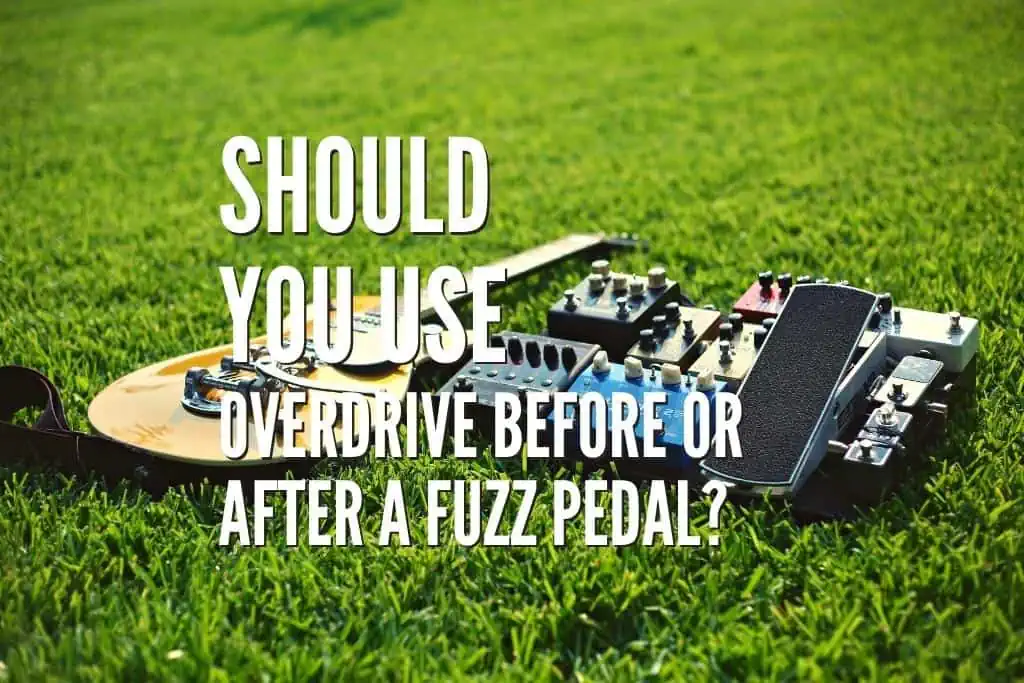Overdrive and fuzz pedals can both be invaluable additions to your setup. The former helps create a warm, natural distortion that responds to the player’s touch, while the latter is known for providing an extreme distortion effect that can add a lot of acoustic interest to a piece. Since they serve such different purposes, musicians often have difficulty deciding which one to use before the other, so let’s see if there’s a right order to follow.
Most musicians use overdrive pedals before fuzz pedals; however, this order is subject to change depending on personal preferences. The abovementioned approach provides a stronger input signal while placing the pedals the other way around creates a muddier, more unique tone.
As you can see, there’s no one-size-fits-all answer to the question posed above, so you’ll have to consider your preferences and goals before making this choice. To help you do just that, below, I’ve covered some of the most important factors to consider during the decision-making process. I’ve also explored what happens in each scenario so that you get a better idea of which setup sounds ideal to you.
How To Decide Whether To Use an Overdrive or Fuzz Pedal First
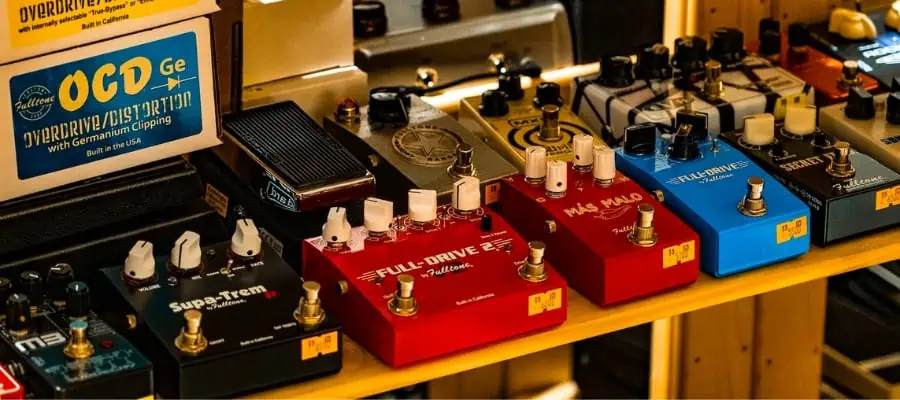
Since deciding on whether to use an overdrive pedal before a fuzz pedal is ultimately a personal one, let’s explore some tips that can help you along the process:
Your Playing Style
If you prefer to play with higher gains, you might want to use a fuzz pedal first. On the other hand, those who like to get a cleaner, sharper tone will greatly benefit from prioritizing an overdrive pedal before the fuzz.
If you don’t know what type of sound you’re after yet, you can always experiment with different orders to find out what works for you.
The Types of Pedals in Question
Specific fuzz and overdrive pedals are designed to work better when placed before or after the other. That’s why it’s always a good idea to check the owner’s manual and read as many reviews as possible to determine whether the pedals you have on hand call for a specific order.
The Order on the Signal Chain
When you account for the signal chain, placing an overdrive pedal before a fuzz pedal is usually best. That’s because the former will boost the guitar’s signal, providing a stronger input for the fuzz to work with.
However, as mentioned, that’s not always the case, especially for more modern models with specific requirements.
So, while there’s no hard and fast rule on whether to use an overdrive or fuzz pedal first, these three considerations can help you make the right decision for your setup, playing style, and general preferences.
If you’re still unsure, read on as I explore what happens in either scenario to see which would be preferable for you.
What Happens When You Use an Overdrive Pedal Before a Fuzz Pedal
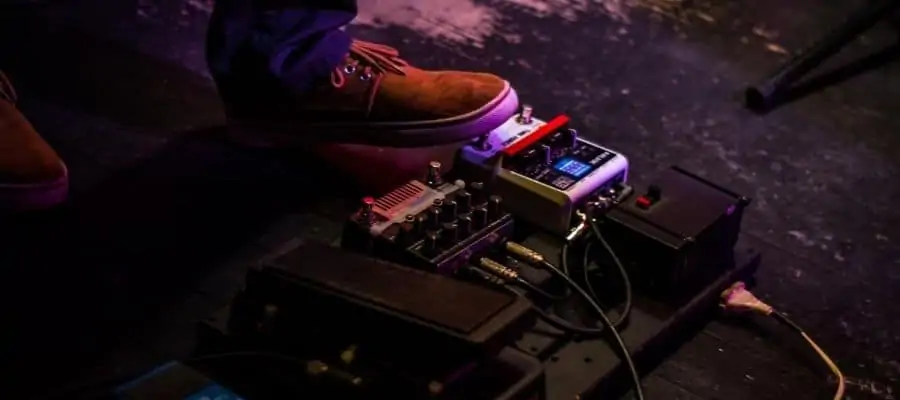
When you use an overdrive pedal before a fuzz pedal in your guitar signal chain, the former will boost the initial signal and add some subtle overdrive to the tone. The (now enhanced) signal will feed into the fuzz pedal, which will heavily distort and clip it to create that sought-after sustain-heavy sound.
Since the initial signal will be notably stronger, this order produces an aggressive fuzz tone with enhanced sustain and clarity. It also helps with tonal shaping and smoothes any harsh frequencies right out.
Using the overdrive pedal first is a great way to create a dynamic tone with a lot of character. This equates to more fuzz, distortion, and compression, which can take a melody to the next level.
Though this is the go-to order for many experienced guitarists, it has some potential drawbacks. For example, using an overdrive pedal first can sometimes result in s too bright or harsh sounds. In this case, you’ll either have to adjust the gain or treble settings and tone them down a bit or experiment with a different setup.
If the technique is overdone, you can quickly end up with a tone that’s too fuzzy. This can be especially problematic for classical guitarists seeking a smoother, more natural sound. If you consider yourself part of this group, trying out the alternative order might be best.
What Happens When You Use an Overdrive Pedal After a Fuzz Pedal
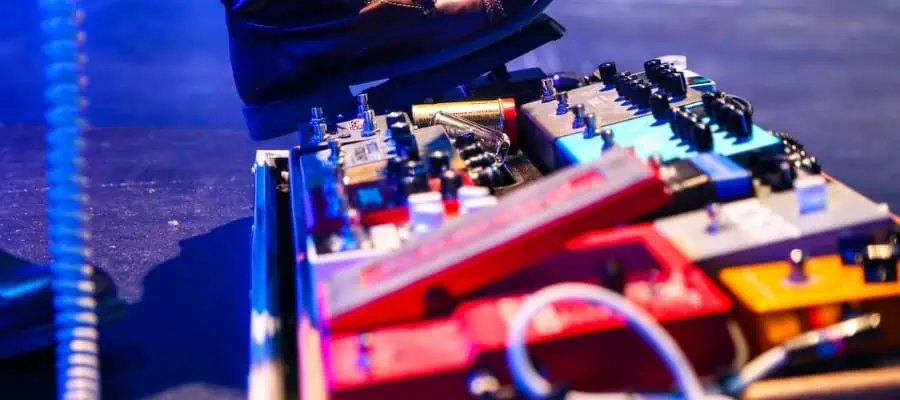
On the other hand, when you use an overdrive pedal after a fuzz pedal, you’ll benefit from some additional gain and harmonic saturation. That said, the initial signal coming in will be distorted and not as powerful, considering that you’ve placed the fuzz pedal first.
One downside to this order is that you’ll get a sound that’s far less compressed and dynamic (which, to some, translates to “less interesting”). Sometimes, the tone can even be considered muddy or without enough definition, especially if both pedals are set with high gain or low-end frequencies. If this seems to be the case for you, it’s worth experimenting by reordering your equipment.
With that said a wide array of musicians can still appreciate the smoother, more saturated tone that this setup produces. For example, those playing blues or classic rock should try to use an overdrive pedal after a fuzz pedal almost every time.
That’s why you’ll often find this camp of musicians arguing that the fuzz-first-overdrive-second order is the golden standard. As you can see, even the pros can’t decide among themselves on the right order to follow, so there’s no pressure on you to do that either. Simply consider the deciding factors and experiment as needed – you’ll instantly find out what works for you.
Conclusion
There’s no hard and fast rule when deciding whether to use an overdrive or fuzz pedal first. Like music, topics like this are a matter of personal preference, which is why the best way to decide is to consider your playing style, the types of pedals in question, and the order on the signal chain.
And even though the details and examples provided above can help you make a well-informed decision, my top advice would be to experiment until you figure out the order that feels and sounds best to you.
If you found this article useful, you may want to save this pin below to your Guitar board.
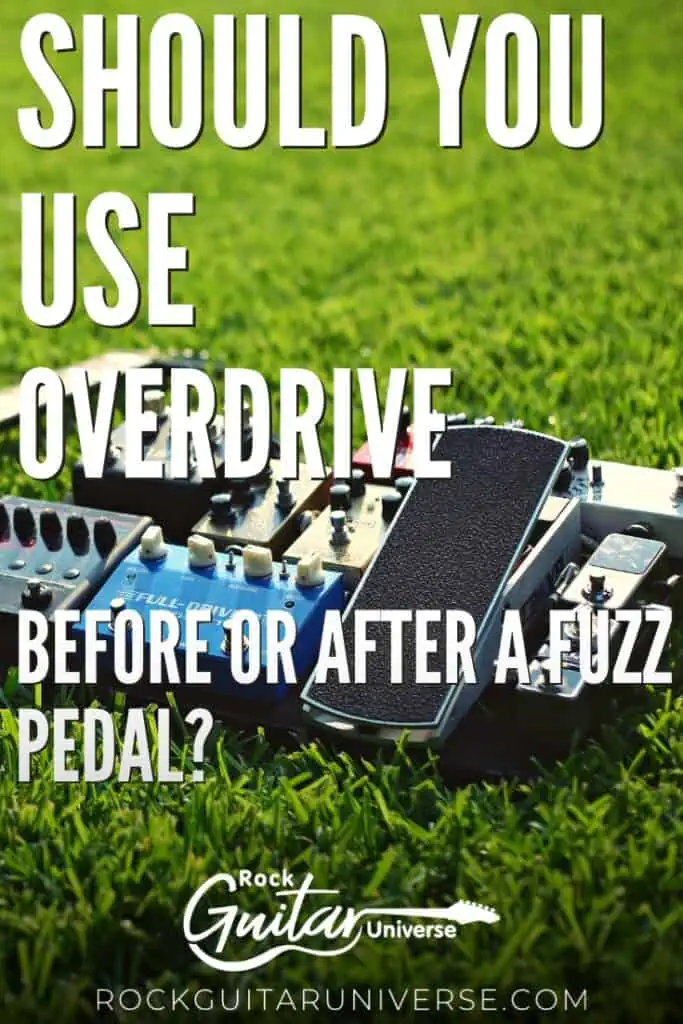
Recent Posts
Some guitarists insist on buying an expensive amplifier with their electric guitar. They assume that this is a must for every type of guitarist out there. However, in some situations, this isn’t...
Top 50 Free Realistic Guitar VST Plugins With Sound Examples
As technology has rapidly advanced in the recent decade, computers are stealing more and more roles from physical musical instruments and accessories. Nowadays, you do not need expensive amps,...

